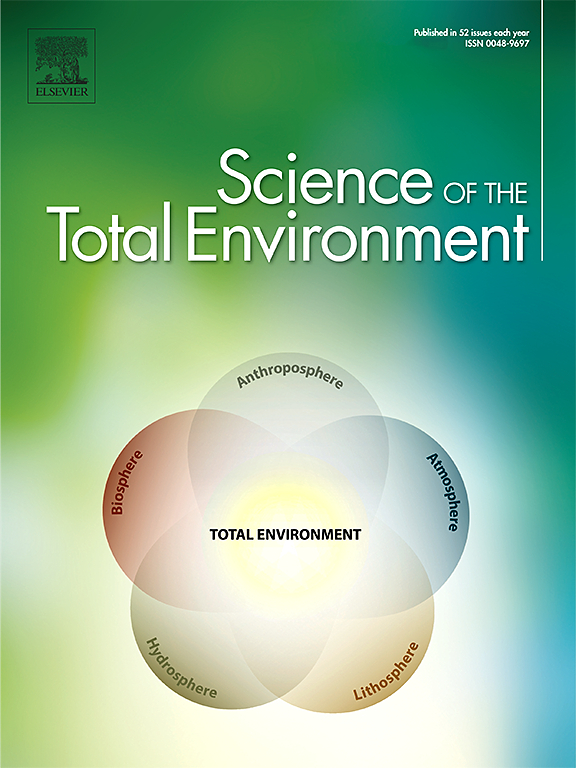Simplified kinetic modelling to understand the mechanism of tensioactive-aided degradation of paraoxon by a free or membrane-bound enzyme
IF 8.2
1区 环境科学与生态学
Q1 ENVIRONMENTAL SCIENCES
引用次数: 0
Abstract
Today, the accumulation of low molecular weight contaminants such as organophosphate pesticides in the environment threatens human health and the economy. Strategies to enhance enzymatic processes, such as the addition of tensioactives to the reaction mixture, are currently being investigated. However, despite the observed increase in enzyme activity, the mechanism promoted by tensioactives on enzymes is not yet fully understood. A kinetic modelling study was carried out to understand the mechanism of paraoxon degradation enhancement in presence of two different types of tensioactives (CTAB and SDS). The chosen kinetic mechanism considers all possible interactions between the substrate, the enzyme and the tensioactive, whereby the enzyme is free in solution or immobilized on a polymeric membrane. The technique of non-linear multivariate optimisation was used to calculate the kinetic parameters.
For the free enzyme, the study enables a comparison of the effect of the two tensioactives for each reaction step, which leads to a deeper understanding of why CTAB, even though the kinetic mechanism is the same for both tensioactives, ensures better overall performance compared to SDS (yield coefficient (YC) = 3.49).
In contrast, when the enzyme is immobilized in the membrane, the kinetic mechanism in the presence of SDS differs from that in the presence of CTAB and the two tensioactives cause a similar reaction enhancement (yield coefficient (YC) ≈ 1). The interaction between the enzyme and the tensioactive is hindered when the enzyme is bound to the membrane, resulting in less effective catalytic degradation than the free enzyme.
The improvement in the enzymatic degradation of paraoxon in the presence of tensioactives can be explained by the fact that the tensioactive can bind both the enzyme and the reagent, which increases the overall reaction performance in both enzyme configurations, with the free enzyme performing better.

建立简化动力学模型,了解游离酶或膜结合酶辅助降解对草快的机理
本文章由计算机程序翻译,如有差异,请以英文原文为准。
求助全文
约1分钟内获得全文
求助全文
来源期刊

Science of the Total Environment
环境科学-环境科学
CiteScore
17.60
自引率
10.20%
发文量
8726
审稿时长
2.4 months
期刊介绍:
The Science of the Total Environment is an international journal dedicated to scientific research on the environment and its interaction with humanity. It covers a wide range of disciplines and seeks to publish innovative, hypothesis-driven, and impactful research that explores the entire environment, including the atmosphere, lithosphere, hydrosphere, biosphere, and anthroposphere.
The journal's updated Aims & Scope emphasizes the importance of interdisciplinary environmental research with broad impact. Priority is given to studies that advance fundamental understanding and explore the interconnectedness of multiple environmental spheres. Field studies are preferred, while laboratory experiments must demonstrate significant methodological advancements or mechanistic insights with direct relevance to the environment.
 求助内容:
求助内容: 应助结果提醒方式:
应助结果提醒方式:


